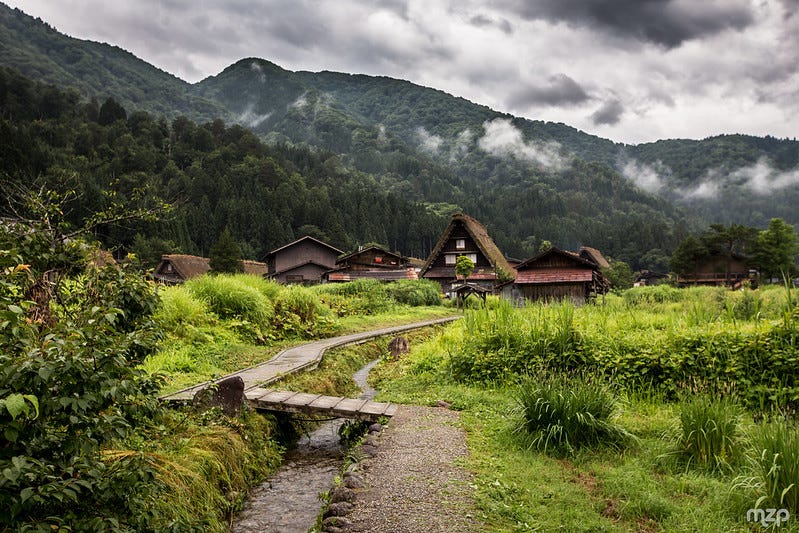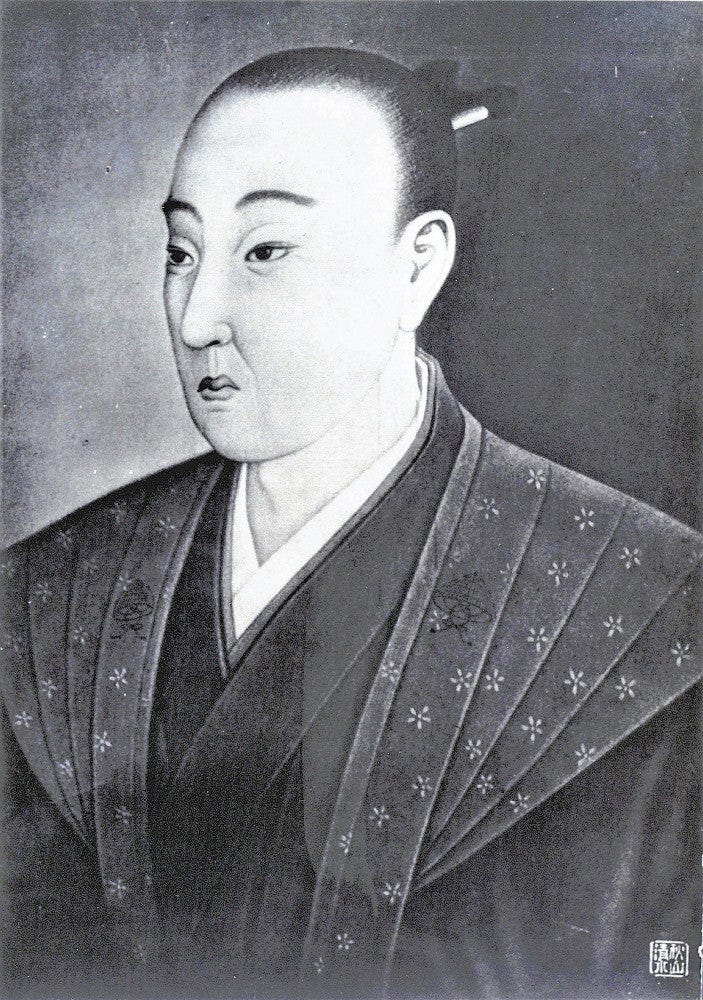
Kumazawa Banzan was one of those nowadays mostly forgotten multi-talented geniuses we so often encounter in history. Born in Kyoto to a ronin1 samurai father and a samurai mother in 1619, the oldest son of six siblings. At eight he was adopted by his maternal grandfather and thus began his career—as bumpy as the road would turn out to be—as a proper samurai.
As a young man Kumazawa became enamored with Yangmingism2, a school of Neo-Confucian teachings that was fairly recently arrived in Japan via China, and became a prodigious scholar and reader. Although having been made the commander of a unit of samurai gunners (musketeers) in 1650, his main interest was in the governance and improvement of all the people in his Lord’s province. For this reason he studied hydrology, engineering, agriculture, and funded both government and public schools open to anyone who wished to study.
In 1650 Japan was at a dangerous point: decades of peace and prosperity and an unparalleled growth in both economy and industry had reduced the nation’s forests to a sorrowful state. Many small mountains were stripped bare of trees to feed the growing cities and their commerce, and with that came erosion of the fragile hillside soils, and inevitably flooding, leading to death and famine. The fruits of peace and human ingenuity was then as now, ecological destruction.
In 1654 disaster struck when a typhoon brought down a large flood on the Bizen Plains of Okayama. The flood wiped out many villages and their food stores. Kumazawa was put in charge of the situation and opened all available food stores in the domain, even personal stores of the feudal rulers. With famine averted Kumazawa put all his efforts into rebuilding the villages and re-engineering waterworks, canals, rivers, dams and ponds to better resist future flooding.
Kumazawa also ordered the re-planting of the decimated forests, the ultimate source of the devastating floods, but this proved to be the most difficult task of all. With the hillsides and especially the ridges stripped bare, the combined effect of years of harsh sun and rain had drained the little soil that remained of any nutrients. The mountains were dying. Planting seeds or seedlings the normal way did not work. Seeds could not sprout without water and nutrients, and seedlings soon withered and died.
We don’t know where he got the idea, but in a stroke of genius he instructed villagers to spend the winter months spreading a substantial amount of millet seed on top of the mountain ridges, and to cover the scattered seed with a layer of cut dried grass. Birds soon caught on to the idea of a free meal and flocked to the bare ridges to feast. As they spent all their time poking around the dried grass to find the scattered seeds (and later some of it even sprouting and giving the birds even more to feed on) they would leave tons of their droppings behind, rich in phosphorous3. Some birds also deposited the seeds of the lowland trees they had feasted on during the summers and autumns. Already coated in fertilizer, the seeds and nuts sprouted far better than if villagers had planted them in wet mix of old grass and bird droppings.
At first the villagers could not understand the point of throwing away perfectly good seeds on bare mountain tops, but when the first tree seedlings started sprouting on the ridges and in the valleys it was plain to all who could see what would happen.
As Kumazawa had predicted, it would take thirty years for the ridges to once again be covered in tall trees and thick soil. This time the villagers would harvest wood with far more care than before, and the local lords did their bit by enacting strict laws punishing the illegal felling of trees: “one tree, one neck”.
As Kumazawa wrote in his Neo-confucian classic, the book 大学或問, Daigaku Wakumon, published in 16874:
“Water, plants, seeds and nutrients all fall and flow from the high places to the low places, and especially the high places become poor, but sometimes, with the help of birds, we can make it all flow from the low places to the high places.”5
Isn’t that a nice image of localism/cyclical economy/ecology/holistic thinking, all rolled into one?

Epilogue: Kumazawa Banzan—like many geniuses of his time—managed to make a lot of powerful enemies, a situation not made easier by his inability to tolerate corruption and less than intelligent leaders. He was eventually retired from official duties and went in and out of hiding and internal exile, and finally into a “not exceedingly strictly enforced” house-arrest in 1687. In 1691 he died from a fever within the grounds of Koga Castle. His books, including the Daigaku Wakumon, was mostly banned and his reputation was not fully restored until 1910 when the Meiji government, like the Shogunate before them, faced with rapid industrialization and the resulting ecological destruction, recognized his efforts and scholarship with honers and awards.
In feudal Japan a ronin (literally wave-man) was a samurai who for some reason or other found himself without a master. Some ronin had disgraced themselves, others had lost their master in combat or death. Without a position and income of their own they had to live from the savings of their wives or relatives, or take up positions like teachers, craftsmen, traders, etc.
Named after its founder, the Ming dynasty scholar, philosopher and general Wang Yangming (1472-1529), whose Confucianism emphasized “innate knowledge” and denied the rationalist school of thinking that had previously dominated confucianism. You might want to think of Yangmingism as a “zen-kind-of-Confucianism”, if that makes any sense.
The same concept would become hugely important in 19th century North and South America when the industrially scaled harvesting and mining of sea-bird droppings, guano, begun.
By coincidence, the same year 1687, on the other side of the world, Newton published his explanation of the laws of gravity.
My own lose translation of the original text.



